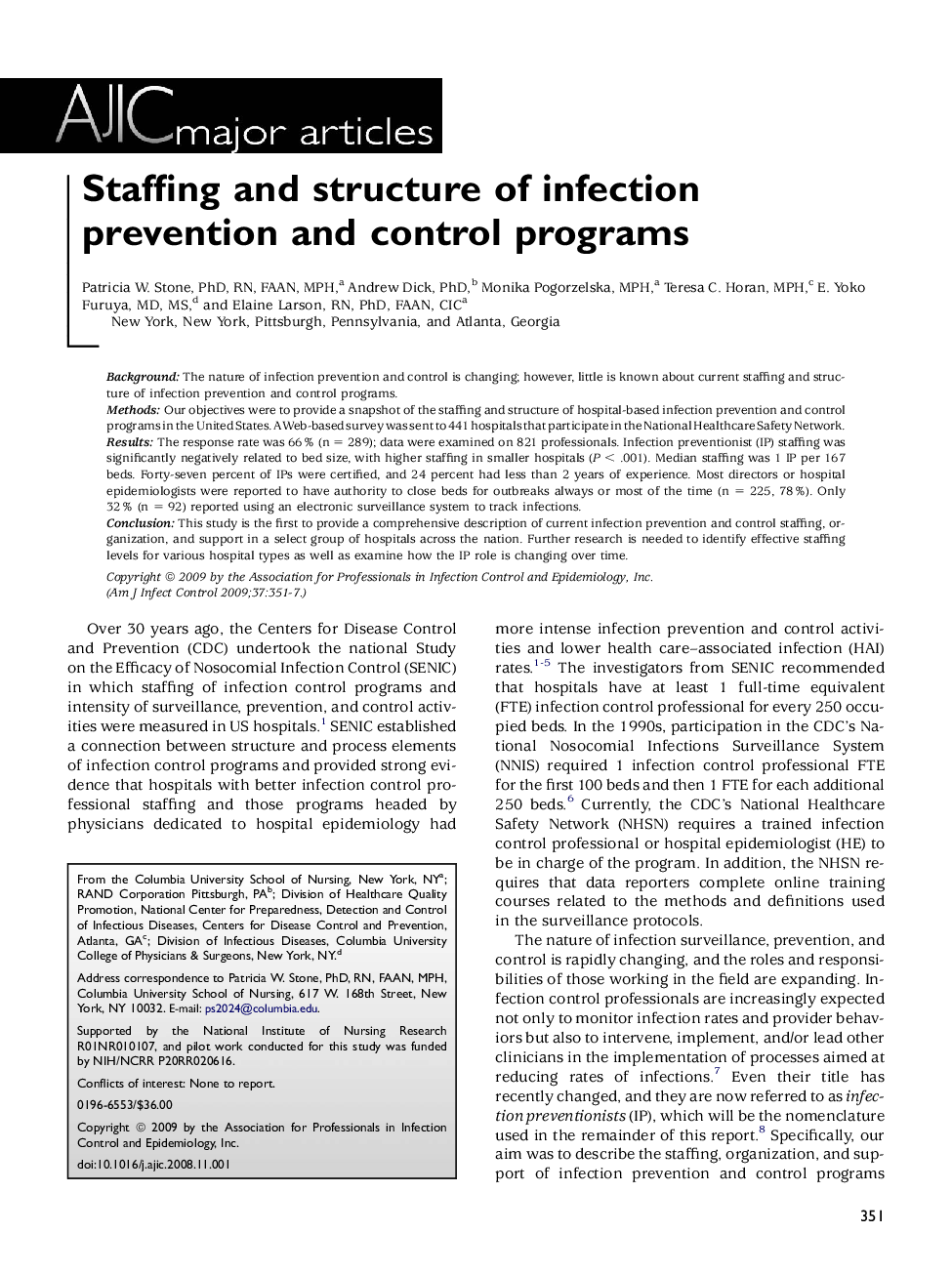| Article ID | Journal | Published Year | Pages | File Type |
|---|---|---|---|---|
| 2640020 | American Journal of Infection Control | 2009 | 7 Pages |
BackgroundThe nature of infection prevention and control is changing; however, little is known about current staffing and structure of infection prevention and control programs.MethodsOur objectives were to provide a snapshot of the staffing and structure of hospital-based infection prevention and control programs in the United States. A Web-based survey was sent to 441 hospitals that participate in the National Healthcare Safety Network.ResultsThe response rate was 66% (n = 289); data were examined on 821 professionals. Infection preventionist (IP) staffing was significantly negatively related to bed size, with higher staffing in smaller hospitals (P < .001). Median staffing was 1 IP per 167 beds. Forty-seven percent of IPs were certified, and 24 percent had less than 2 years of experience. Most directors or hospital epidemiologists were reported to have authority to close beds for outbreaks always or most of the time (n = 225, 78%). Only 32% (n = 92) reported using an electronic surveillance system to track infections.ConclusionThis study is the first to provide a comprehensive description of current infection prevention and control staffing, organization, and support in a select group of hospitals across the nation. Further research is needed to identify effective staffing levels for various hospital types as well as examine how the IP role is changing over time.
